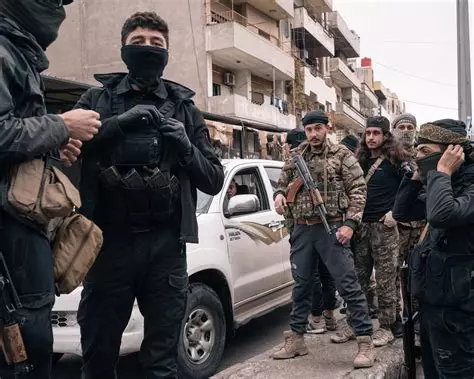In the grim wake of Bashar al-Assad’s ouster, Syria is plunged into fresh sectarian chaos. A government investigation confirms what many feared: a large-scale targeting of Alawite civilians in a retaliatory wave of violence that leaves over 1,400 dead.
The New Syria’s First Massacre
The post-Assad Syrian experiment, hailed so eagerly by Western chancelleries, is off to a predictably bloody start. A new government report, delivered with the usual opacity, reveals that more than 1,400 civilians were killed in a brutal episode of sectarian violence in March, centred on the country’s Alawite coastal strongholds. While framed as retaliatory justice, the violence bore the hallmarks of an unrestrained purge.
Sectarian violence in Syria, appears already in the first paragraph, and rightly so, as this is no isolated event. Rather, it’s a troubling indicator of the centrifugal forces tearing Syria apart under the veneer of “democratic transition.”
A Fragile Post-Assad Landscape Erupts
The sequence began on March 6, when armed loyalist factions, remnants of Assad’s once-feared apparatus, clashed with government forces. Some 238 government troops were reportedly killed, triggering a cascade of vengeance. According to the investigative committee, over 200,000 armed men, including civilians, mobilised in what can only be described as a civil militia crusade. Their targets? Primarily members of the Alawite sect, Assad’s own people.
Here, the narrative begins to fray. Committee spokesman Yasser al-Farhan insists that “sectarian motives were based on revenge, not ideology.” As if the difference offered any moral clarity.
Villages were torched. Civilians were interrogated about their sect before being executed. Entire communities fled to Lebanon, echoing the early days of the Syrian civil war. Yet, Western media coverage remained curiously restrained, as if fearing to upset the carefully curated image of post-Assad liberation.
Ambiguity and Denial from the New Power Brokers
The committee’s chair, Judge Jumaa al-Anzi, made the standard denials: no evidence of military orders, no proof of systematic kidnapping of women, isolated incidents. These declarations, too neat and too rehearsed, serve more to deflect than illuminate. Meanwhile, rights groups, including a notably reserved UN commission, have documented multiple cases of Alawite women abducted, contradicting official narratives.
Notably absent from the report: any admission of complicity by Syria’s new rulers. Nor was there clarity on the exact role of state security forces, many of whom are suspected to have participated in the looting and killing. Out of nearly 300 suspects identified, only 37 have been arrested, and no numbers were offered regarding how many belonged to the security services themselves.
Echoes of the Coast in the South: Sweida on Fire
As the dust settled on the coast, the flames reignited further south. In Sweida, clashes erupted between Sunni Bedouin clans and armed Druze groups, another mosaic fragment in Syria’s collapsing ethno-sectarian puzzle. The Syrian state, instead of acting as arbiter, appears once again to have taken sides, reportedly backing the Bedouins.
The result? More than 128,500 displaced, hundreds killed, and Druze neighbourhoods pillaged. This, of course, is “beyond the jurisdiction” of the committee, in the judge’s own words. An elegant way of saying: we don’t touch what we can’t control.
A Nation Imploding Under the Weight of Its Fictions
What emerges is a country still very much at war with itself. The official line, of post-Assad unity, of democratic progress, of accountability, dissolves when confronted with grim realities. The sectarian violence in Syria isn’t a footnote; it’s the headline. And until this is acknowledged in full, no reconstruction plan, no Western aid package, and no new constitution will bring Syria back from the abyss.



